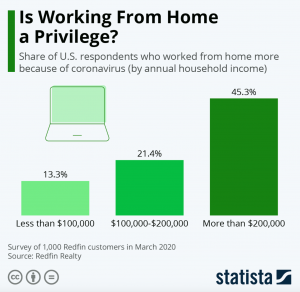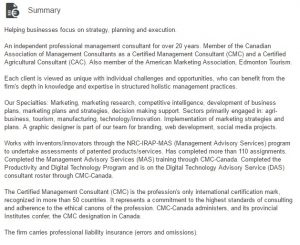How effective is your enterprise mobile app strategy? Contributor Bridget Roman dives into the results from an Adobe survey to uncover tips to keep you a step ahead of the competition.
 Every digital marketer loves talking about consumer-facing apps, and why shouldn’t they? They’re fun, flashy, and — most of all — they are sharing your brand with the world.
Every digital marketer loves talking about consumer-facing apps, and why shouldn’t they? They’re fun, flashy, and — most of all — they are sharing your brand with the world.
But there’s another fast-growing trend that competitive organizations are focused on — and it’s giving smart companies an edge over the competition by increasing work productivity, easing tasks, enabling information-sharing and building connections with customers and stakeholders behind the scenes like never before.
Welcome to the world of enterprise mobile apps.
Adobe (my employer) recently surveyed 1,500 enterprise decision-makers (registration required) across the globe in sales, marketing and human resources to learn more about their enterprise mobile app strategies. We discovered that 61 percent believe that companies risk being at a competitive disadvantage by not embracing mobile apps. However, 66 percent of those surveyed believe they are either on par with — or worse, they are lagging behind — their competitors with regard to enterprise mobile apps.
The opportunity to gain a competitive edge with your enterprise mobile app strategy is growing — and quickly, too. That’s why we’ve combed the data to uncover strategies you can use right now to bolster yours.
Following are five tips for creating a competitive enterprise mobile app strategy.
Tip #1: Focus on mission-critical apps that meet the needs of a mobile workforce
When asked which types of enterprise mobile apps were likely to be mission-critical in the next three years, respondents cited customer service and support (61 percent), customer relationship management (59 percent), sales enablement (59 percent) and messaging and collaboration systems (59 percent).
Focusing on mission-critical apps means discovering which apps are vital to your organization by evaluating employee workflows and looking for those that meet the needs of a highly mobile workforce. Identify how to equip your employees to be more productive with mobile apps, map to the needs of your organization, and focus on those that yield the most benefit.
Supplement or replace current core desktop applications with those geared toward mobile. Then, expand opportunistically to areas where mobile and device-specific features will yield productivity and competitive benefits.
Tip #2: Deploy key capabilities for success
Determine which features will yield the best results for your brand, and deploy for success. Unsurprisingly, nearly half (48 percent) of survey respondents named security as a top feature — and for good reason. Mobile devices are constantly on the go, and many are loaded with confidential or proprietary information.
Integration with other business systems (41 percent) ranked highly, as there’s not only value in displaying content in an app, but also in its integrating easily, allowing employees to do something with that content, such as place orders or update sales records.
Of respondents, 36 percent cited “ease of publishing and updating content” as a key capability, allowing developers, marketers and business users to update and push content out, ensuring it’s accurate and up to date. Finally, 34 percent of survey respondents discussed multiple platform support and the ability to access other devices and platforms as a top priority for success.
Tip #3: Centralize app management
As with any project, launching an enterprise mobile app can include some obstacles. Luckily, many issues can be resolved simply by centralizing app management through a unified dashboard.
A unified dashboard displays — along with robust reporting capabilities — all the various enterprise mobile apps you have implemented. A holistic view, for example, can help you detect traffic patterns that may indicate security anomalies or usage errors.
When tackling centralized app management, establish a core team to oversee challenges and top concerns like those identified in the report: security (45 percent), errors caused by updates (44 percent) and lack of customization in the app (40 percent).
Tip #4: Understand how your organization views enterprise mobile apps
Additionally, the survey revealed some ideas on the perception of enterprise mobile apps within the organization and how that knowledge can be useful in driving consensus and adoption from the deployment of enterprise mobile apps. Results suggest that employees using enterprise mobile apps feel up to date (90 percent) versus out of touch, productive (88 percent) versus distracted and empowered (87 percent) versus helpless.
Of course, efficient adoption of new tools and technologies can be complicated, and a sound enterprise app strategy should include programs to measure and enhance employee satisfaction through surveys, analytics, training, updates and program communications.
Rallying teams around the digital deployment of apps by developing programs that ensure employee satisfaction helps drive internal consensus and buy-in support.
Tip #5: ‘Future-proof’ your enterprise mobile app program
Investing in and staying ahead of changes in app-development requirements will help your organization gain deeper app adoption, while supporting broader use cases. According to our survey results, 77 percent of companies believe that the enterprise mobile app world is different from what it was two years ago.
The pace of change is rapid, and “future-proofing” an enterprise mobile app program is essential for building a competitive strategy. Staying informed on security and privacy safeguards companies’ proprietary information; cloud-driven apps help connect mobile experiences with backend systems like customer relationship management (CRM) or enterprise resource planning (ERP); and optimizing user experience delivers clean, intuitive user experiences that engage with and add value to work streams and processes.
While companies are aggressively adopting enterprise mobile apps (usage and investment are on the rise), few are leveraging the power of a robust strategy.
Begin by looking at the apps you currently have deployed. How are they designed to be used? What are the workflows? Are they efficient, and do you have analytics? It’s important to assess your existing enterprise mobile app strategy and identify other areas where the right app could drive further productivity.
Although 61 percent believe that businesses risk being at a competitive disadvantage by not embracing mobile apps, 66 percent of companies believe that they are only on par with or lagging behind the competition when it comes to using enterprise mobile apps to further business objectives. Smart brands have a tremendous opportunity to outpace the competition by creating competitive enterprise mobile app strategies that deliver.
Some opinions expressed in this article may be those of a guest author and not necessarily Marketing Land. Staff authors are listed here.
Marketing Land – Internet Marketing News, Strategies & Tips
(70)
Report Post









